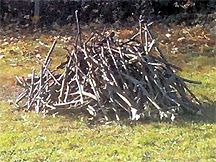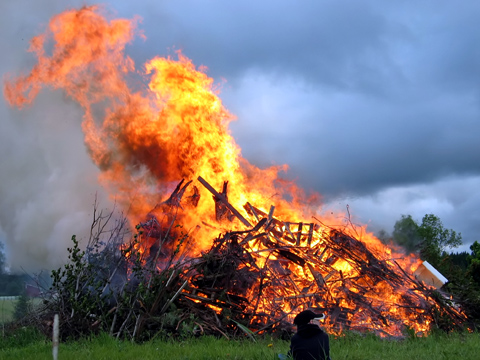Wednesday 4 September, 2013, 09:46 - Spectrum Management
Posted by Administrator
The new 700 MHz mobile band (703 - 748 paired with 758 - 803 MHz) is a hot topic amongst spectrum aficionados around the world. It raises a number of technical and political issues which are far from being fully resolved. On the political side, the main battle is between broadcasters (who currently occupy the band) and the mobile community who are keen to brush the broadcasters aside to clear the spectrum for more mobile broadband services. Broadcasters argue that they need more spectrum to cope with high definition and other developments whilst the mobile operators believe that the spectrum has greater value if used for extending broadband capacity and especially, given the good propagation characteristics at 700 MHz, the coverage, of their networks.Posted by Administrator
 Whilst the political issues are like a pile of tinder dry kindling just waiting for a spark to set them alight, there are technical problems to address as well: The way in which the band is paired means that mobile handsets will be transmitting in the frequencies immediately adjacent to television broadcasts. Television broadcasts using channel 48 (in the Region 1 8 MHz raster) will use frequencies up to 694 MHz. Mobile handsets will use frequencies as low as 703 MHz. This leaves a 9 MHz gap between the two.
Whilst the political issues are like a pile of tinder dry kindling just waiting for a spark to set them alight, there are technical problems to address as well: The way in which the band is paired means that mobile handsets will be transmitting in the frequencies immediately adjacent to television broadcasts. Television broadcasts using channel 48 (in the Region 1 8 MHz raster) will use frequencies up to 694 MHz. Mobile handsets will use frequencies as low as 703 MHz. This leaves a 9 MHz gap between the two.Whilst it might seem that the likelihood of a low power (50 milliWatt) transmission from a mobile phone causing interference to reception of a high power (100 kiloWatt) television service is small given the vast (2 million times) difference in transmitter power, the reality is that the mobile handset could be within only a few metres of the television receiver whereas the television transmitter might be tens of kilometers away. The strength of interference from the handset could therefore be orders of magnitude higher than the incoming television signal. Using free space path loss:
- A 50 mW (23 dBm) mobile transmitter 3 metres away produces a field strength of 91 dBuV/m
- A 100 kW (80 dBm) television transmitter 30 kilometers away produces a field strength of 68 dBuV/m
 The 9 MHz gap between the mobile transmissions and the television reception is known as a guard-band and is there to give a chance for the television receiver to filter out the unwanted mobile transmissions. There is plenty of work going on to check that this is the case but it will depend on a number of factors that are outside the control of the mobile operators or television broadcasters such as:
The 9 MHz gap between the mobile transmissions and the television reception is known as a guard-band and is there to give a chance for the television receiver to filter out the unwanted mobile transmissions. There is plenty of work going on to check that this is the case but it will depend on a number of factors that are outside the control of the mobile operators or television broadcasters such as:- The quality of the television receiver. Those made to a low price may not perform as well in this regard as more expensive receivers.
- The quality of the receiver installation. An old antenna may receive less signal and poor coax will allow more mobile signal to leak into the receiver exacerbating the problems.
- The proximity of the mobile transmitter to the television antenna. In the case where television reception is through a 'rabbit ears' antenna on top of the TV, the distance between the antenna and the mobile could be far less than 3 metres, or even 1 metre.
- The distance of the receiver from the television transmitter. Those close to the transmitter are less likely to suffer interference but those in areas of fringe reception are at much greater risk.
- The use of television signal amplifiers. Such amplifiers can easily overload and stop working when presented with a strong nearby mobile signal.
The rules of spectrum use state that new users should implement their transmitters in such a way as to protect existing, incumbent users from interference and in that respect, the work to ensure that the new mobile services do not cause harmful interference to television services is totally appropriate. But there is another technical issue that needs to be considered, that of interference from the television transmitter into the mobile network.
Consider a mobile base station that is 1 kilometer away from the television transmitter, trying to receive a signal from a mobile handset that is 500 metres away. Let's run the free space path loss equations again:
- A 50 mW (23 dBm) mobile transmitter 500 metres away produces a field strength of 47 dBuV/m
- A 100 kW (80 dBm) television transmitter 1 kilometer away produces a field strength of 98 dBuV/m
 In this case, the mobile signal would be 51 dB (or 125,000 times) weaker than the television transmitter. Again the 9 MHz guard-band is there to allow the mobile base station to filter out the television transmission but the job is much (much!) more difficult. Move the mobile handset further away from the base station, or increase the transmitter power of the television signal, or move the base station closer to the television transmitter and the situation gets even worse. In terms of who needs to protect who from interference, interference caused by the television signal into the mobile networks is secondary to ensuring the protection of television reception but is potentially an equally burning problem.
In this case, the mobile signal would be 51 dB (or 125,000 times) weaker than the television transmitter. Again the 9 MHz guard-band is there to allow the mobile base station to filter out the television transmission but the job is much (much!) more difficult. Move the mobile handset further away from the base station, or increase the transmitter power of the television signal, or move the base station closer to the television transmitter and the situation gets even worse. In terms of who needs to protect who from interference, interference caused by the television signal into the mobile networks is secondary to ensuring the protection of television reception but is potentially an equally burning problem.Whilst it is possible to develop filters that can provide 50 dB, 60 dB or even more rejection of the television signals, they are costly. Of course not every site requires such an expensive filter: only those close to television transmitters on channel 48 will need them. But whilst television frequency use is not normally very dynamic, as re-planning of networks takes a lot of co-ordination, they do change channel from time-to-time and so knowing which site to fit the filters to cannot be done with complete certainty.
So if the political issues form tinder dry kindling just waiting to be lit, the problems of interference from mobile handsets into television receivers are a bucket of petrol poured on that kindling. It may therefore be that the problems of interference from television transmitters into the mobile network are the spark that gets the fire burning!

1 comment
( 5795 views )
| permalink
| 



 ( 2.8 / 1936 )
( 2.8 / 1936 )




 ( 2.8 / 1936 )
( 2.8 / 1936 )

